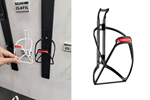Swancor, Adani sign MOU for recyclable wind farm in India
Joint development of a wind farm using wind blades made from Swancor’s EzCiclo recyclable epoxy resin will further support India’s 140-gigawatt wind capacity goal for 2030.
Swancor and Adani New Industries team. Source | Swancor
On Jan. 8, (Nantou, Taiwain) signed a memorandum of understanding (MOU) with (Gujarat, India), officially initiating a partnership to build India’s first recyclable wind farm.
On the basis of the Global Wind Energy Council (GWEC), India is striving to achieve its goal of reaching 140 gigawatts (GW) of installed wind power capacity by 2030. Thus, this project will further support the rapid growth of India’s wind energy sector.
Adani Wind and Swancor plan to complete the required certification by Q2 2025. Swancor will conduct all necessary testing according to the qualification plan provided by Adani Wind. Upon successful testing, Adani Wind will obtain certification from accredited agencies. The adoption of Swancor’s recyclable epoxy resin technology for manufacturing environmentally friendly, recyclable wind turbine blades is scheduled to commence in Q4 2025.
“We are honored to collaborate with Adani Group to realize India’s first large-scale commercial recyclable wind power plant,” Aden Tsai, CEO of Swancor, says. Tsai expresses his gratitude to Milind Kulkarni, Adani’s business head.
This partnership is just the beginning of a long-term relationship. In the future, Adani and Swancor will build upon this foundation to further expand the scale of cooperation, planning to jointly establish the largest recyclable wind farm in Asia.
Related Content
-
Low-cost, efficient CFRP anisogrid lattice structures
CIRA uses patented parallel winding, dry fiber, silicone tooling and resin infusion to cut labor for lightweight, heavily loaded space applications.
-
Plant tour: Airbus, Illescas, Spain
Airbus’ Illescas facility, featuring highly automated composites processes for the A350 lower wing cover and one-piece Section 19 fuselage barrels, works toward production ramp-ups and next-generation aircraft.
-
Plant tour: Collins Aerospace, Riverside, Calif., U.S. and Almere, Netherlands
Composite Tier 1’s long history, acquisition of stamped parts pioneer Dutch Thermoplastic Components, advances roadmap for growth in thermoplastic composite parts.






